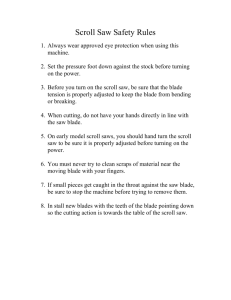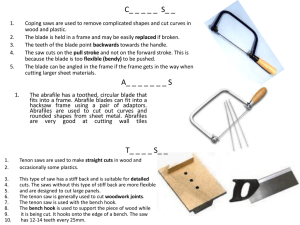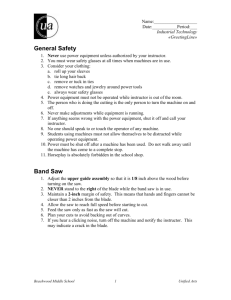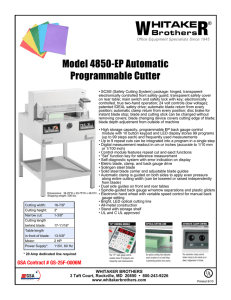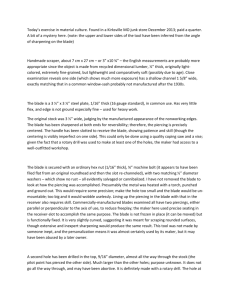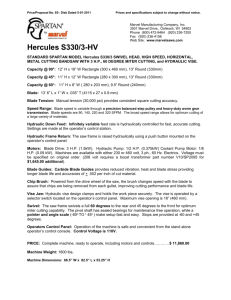Cross Cut Saw Safe Operating Procedures
advertisement
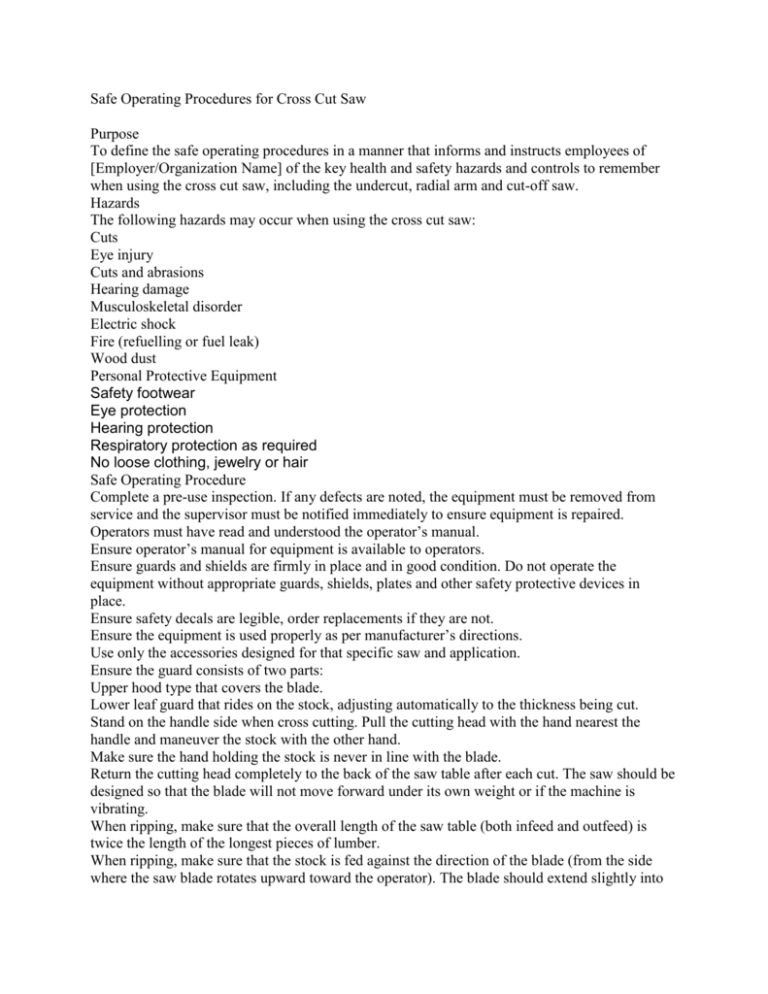
Safe Operating Procedures for Cross Cut Saw Purpose To define the safe operating procedures in a manner that informs and instructs employees of [Employer/Organization Name] of the key health and safety hazards and controls to remember when using the cross cut saw, including the undercut, radial arm and cut-off saw. Hazards The following hazards may occur when using the cross cut saw: Cuts Eye injury Cuts and abrasions Hearing damage Musculoskeletal disorder Electric shock Fire (refuelling or fuel leak) Wood dust Personal Protective Equipment Safety footwear Eye protection Hearing protection Respiratory protection as required No loose clothing, jewelry or hair Safe Operating Procedure Complete a pre-use inspection. If any defects are noted, the equipment must be removed from service and the supervisor must be notified immediately to ensure equipment is repaired. Operators must have read and understood the operator’s manual. Ensure operator’s manual for equipment is available to operators. Ensure guards and shields are firmly in place and in good condition. Do not operate the equipment without appropriate guards, shields, plates and other safety protective devices in place. Ensure safety decals are legible, order replacements if they are not. Ensure the equipment is used properly as per manufacturer’s directions. Use only the accessories designed for that specific saw and application. Ensure the guard consists of two parts: Upper hood type that covers the blade. Lower leaf guard that rides on the stock, adjusting automatically to the thickness being cut. Stand on the handle side when cross cutting. Pull the cutting head with the hand nearest the handle and maneuver the stock with the other hand. Make sure the hand holding the stock is never in line with the blade. Return the cutting head completely to the back of the saw table after each cut. The saw should be designed so that the blade will not move forward under its own weight or if the machine is vibrating. When ripping, make sure that the overall length of the saw table (both infeed and outfeed) is twice the length of the longest pieces of lumber. When ripping, make sure that the stock is fed against the direction of the blade (from the side where the saw blade rotates upward toward the operator). The blade should extend slightly into the table. The motor head must be locked at the correct height and angle. Clamp stock to the table on one side of the saw blade, when making mitre, bevel or compound mitre cuts. Clamping prevents the wood from sliding along the fence during the cut. Turn off the saw when making any adjustments or changes in the setup. Make measurements by placing the wood to be cut against the stop gauge. When measuring with a tape measure or ruler is necessary, turn off the saw until the measuring is complete. Do not use radial arm saws for ripping unless anti-kickback devices are provided and properly adjusted. Do not take your hand away from the operating handle unless the cutting head is behind the fence. Do not remove the stock from a saw table until the blade has been returned to its resting position at the back of the saw table. Use a stick or brush to remove scrap from the saw table. Do not cut free hand. Use the back guide or fence, or other device to keep the workpiece from moving. Do not use cracked or dull blades. Do not leave a running saw unattended, leave only after the saw has been turned off and it has come to a complete stop. Never cross your wrists when holding stock and the blade handle. Repairs to the equipment must be performed by qualified personnel, using original equipment manufacturer (OEM) parts or equivalent. Document Management Effective Date: Revision Date:



